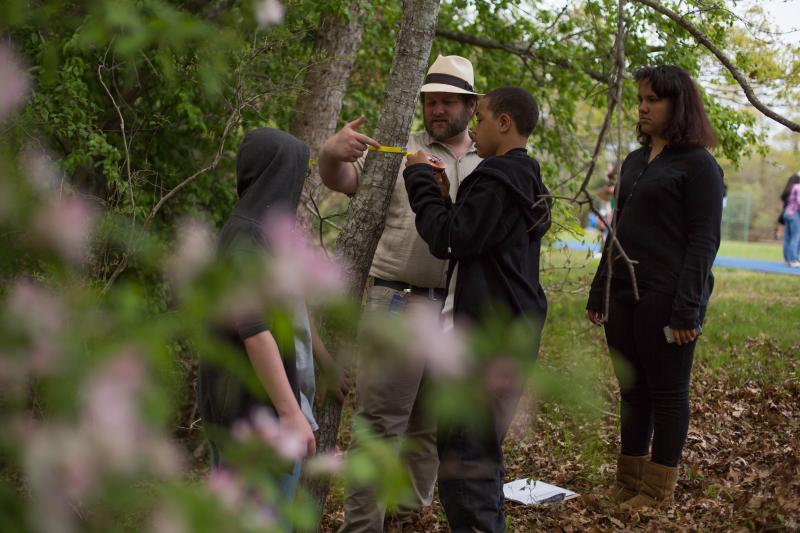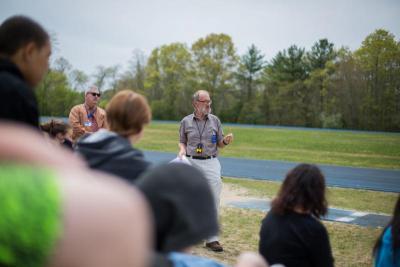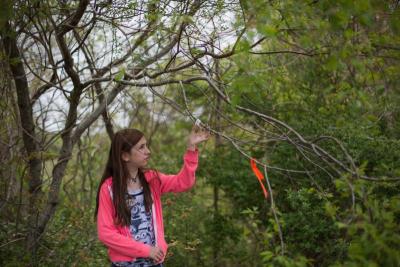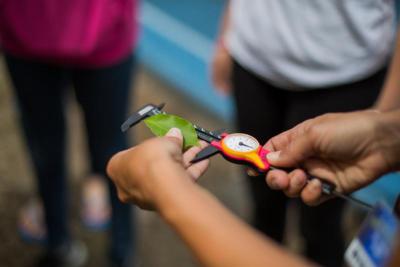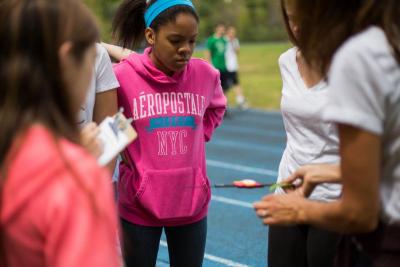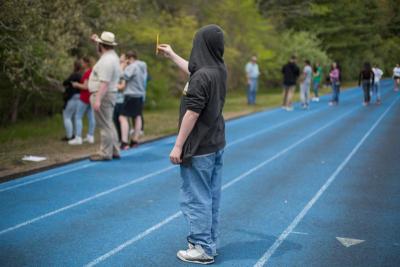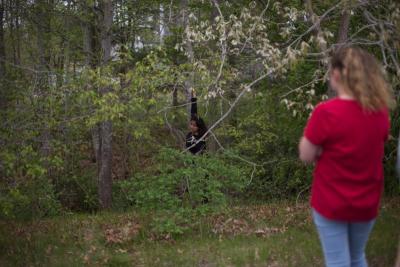Wareham Middle School students learn the process behind climate science
Climate change can be a difficult concept to visualize, especially for younger children. A small group of scientists came to Wareham Middle School Friday to try to change that.
Four scientists, two from Technical Education Research Centers in Cambridge, Massachusetts and two from the Center for Conservation Sciences in Manomet, Massachusetts, taught seventh and eighth grade students how to take measurements that helped them better understand the process of climate science. The students learned how to create a “snapshot” of an area, and how to take measurements of trees in the area.
Abe Drayton, curriculum developer at TERC, explained that an area’s “snapshot” can be captured using a simple, homemade tool, consisting of a cardboard tube with two wires crossed to form a single crosshair in the center of the tube. If a person using the tube sees vegetation where the wires crossed when looking at a designated spot, they record a “yes”; if not, a “no”. The person using the tube looks at the ground, the space at just about knee height height, and the sky, and records a “yes” or a “no” accordingly.
For instance, Drayton said, a lot of “yes” answers in the sky column and a few “no” answers in the ground column might indicate the person was standing in a forest at the time the measurements were taken.
“That means we’re in a forest, but you can see some of the clouds through the trees when you look up,” Drayton said.
In order to measure the trees, the scientists taught the students to measure the trees’ heights and diameters, as well as take the sizes of the leaves from specific, marked branches on each tree. These measurements help scientists determine the overall patterns of trees, and, by extension, the climate, from year to year.
In addition to helping the children understand climate science, the scientists will use the data gathered from the area to assist in their own climate research over the long term.
“Basically, we’re generating a stop-motion movie of what’s happening over the next 20, 50 years,” Drayton said.
Trevor Lloyd-Evans, senior staff scientist at the Center for Conservation Sciences, said they also want to use the way they are teaching the Wareham students to teach others across the country.
“We’re treating this as a research project,” Lloyd-Evans said. “We want to see if we can take a number of videos on these techniques, and ... export this to more distant teaching systems.”
Wareham Middle School teacher Julie Walker said she believes it is important for the children to learn how to take these measurements, because it helps them put a physical face on the otherwise somewhat abstract concept of climate change.
“They’re learning so much about ... climate change,” Walker said. “It’s pretty cool that they’re actually collecting the data that’s going to show whether or not that climate change is affecting that vegetation in their back yards.”



